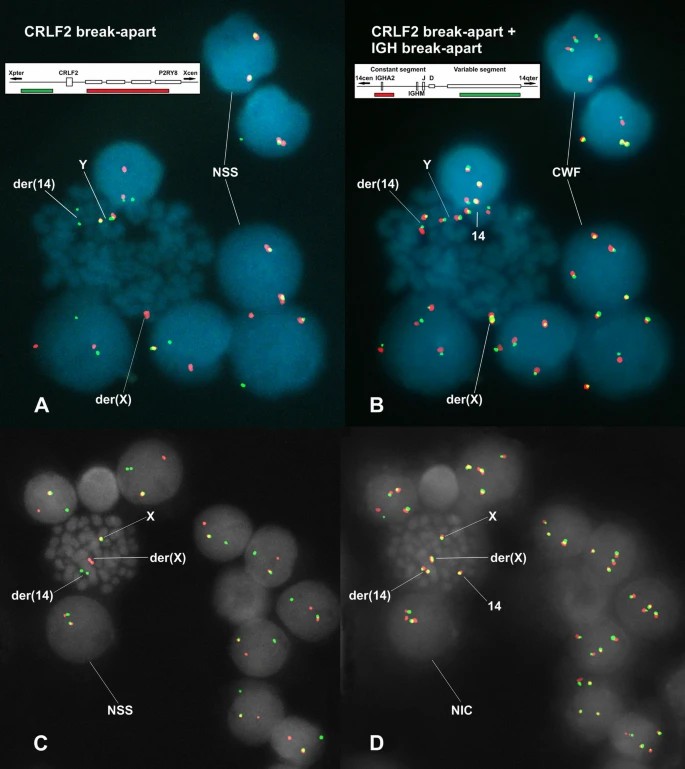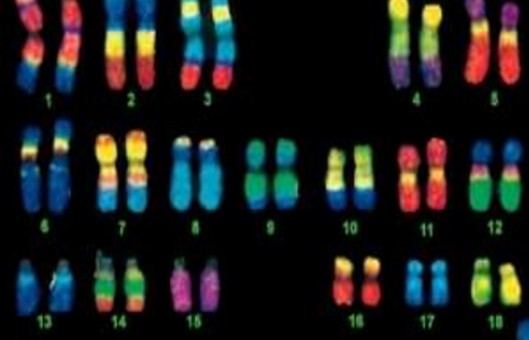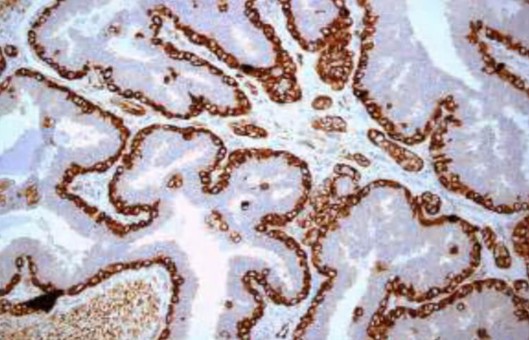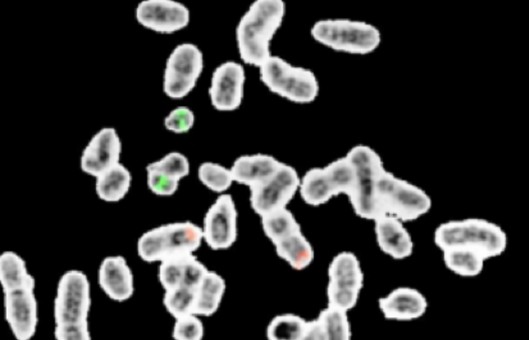A Novel Method for Detection of IGH::CRLF2 Gene Fusions by FISH
Molecular Cytogenetics. 2023 Aug 13; 16 (1): 19.
Authors: González-Arreola RM, García-Romero A, Magaña-Torres MT, González-García JR.
INTRODUCTION
High expression of the Cytokine Receptor-Like Factor 2 (CRLF2) gene has been observed in patients with acute lymphoblastic leukemia BCR-ABL1-like subtype. Currently, there is no commercial system available for the direct detection of the IGH::CRLF2 fusion by fluorescent in situ hybridization (FISH), as there are many other leukemia-related gene fusions. To verify the IGH::CRLF2 fusion, some researchers prepare home-grown FISH probes from bacterial artificial chromosome clones flanking the IGH and CRLF2 genes, which is the best alternative to confirm the fusion, however difficult to reproduce in most cytogenetic laboratories.
METHODS
- First and preferably, cases potentially positive for the IGH::CRLF2 fusion should be studied by FISH with the CRLF2-BA probe (note: it is preferable to start with the CRLF2-BA probe because there are many gene fusions affecting the IGH gene; while for CRLF2, outside the fusions generated by the intra-chromosomal deletion (which can also be detected by this probe) only IGH is the reported partner.
- During the analysis, it is important to photograph and record the coordinates of those microscopic fields selected by the presence of metaphase and/or interphase cells showing an evident separation of the proximal-red and distal-green CRLF2 signals; these cells were considered informative cells.
- After recording several microscopic areas, the glass cover-slip is removed by capillarity in 2xSSC 0.05% FISH-washing solution. Immediately, a second FISH is performed with a CRLF2-BA/IGH-BA probe mix adjusting the recommended supplier's final volume with equal amounts of each probe.
- The procedures for dehydration, hybridization, post-hybridization washing, and counterstaining with DAPI (4′,6-diamidino-2-phenylindole) are the same as those performed in the first FISH experiment. Locate the previously recorded microscopic fields and reanalyze them with emphasis on the informative cells.
- Browse our recommendations
| Product/Service Types | Description |
| ISH/FISH Probes | Creative Bioarray provides the most comprehensive list of FISH probes for rapid identification of a wide range of chromosomal aberrations across the genome. |
| FISH Probe Design, Synthesis and Testing Service | Creative Bioarray offers one or all of the FISH Probe development process steps including initial design, synthesis and testing, quality control and performance validation, and protocol optimization. |
| FISH Services | Creative Bioarray offers a range of different FISH services, including but not limited to fibre-FISH, RNA-FISH, M-FISH, and 3D-FISH. |
RESULTS
The separated CRLF2 signals observed in cells show a perfect coupling with the separated IGH signals revealed with the FISH study using the CRLF2-BA/IGH-BA probe mix. We applied this methodological approach in 6 patients with ALL (4 women and 2 men), selecting 100 informative cells per patient and, through this procedure, the IGH::CRLF2 fusion was directly demonstrated in all (100%) the informative cells.
 Fig. 1 A and C present FISH performed with the CRLF2-BA probe, and B and D show FISH performed by mixing both the CRLF2-BA and IGH-BA probes.
Fig. 1 A and C present FISH performed with the CRLF2-BA probe, and B and D show FISH performed by mixing both the CRLF2-BA and IGH-BA probes.
SUMMARY
For the direct observation of the IGH::CRLF2 gene fusion, we designed a methodological approach requiring the two commercially available IGH and CRLF2 break-apart probes. Our methodological approach allows direct visualization of the IGH::CRLF2 gene fusion and has the potential to be used for the identification of other gene fusions.
RELATED PRODUCTS & SERVICES
Reference
- González-Arreola RM, et al. (2023). "A novel approach for direct detection of the IGH::CRLF2 gene fusion by fluorescent in situ hybridization." Mol Cytogenet. 16 (1): 19.


